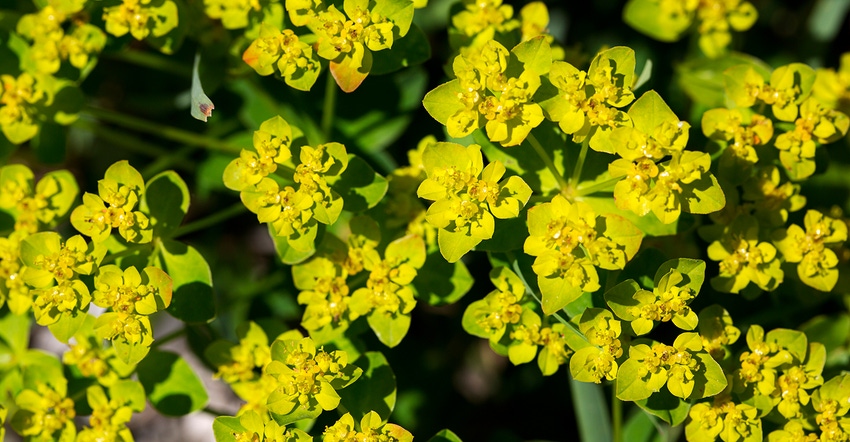August 14, 2018

The Weed Science Society of America has uncovered seven state-level best practices in noxious weed control. Noxious weeds are those plants known for their negative impact on public health, agriculture, recreation, wildlife or property. Once a weed is classified as noxious at the federal, state or local level, authorities can implement quarantines and take other actions to manage the weed and limit its spread.
Here are the strategies:
Narrow your focus. While there are 112 weeds on the federal noxious weed list, many states take a “less is more” approach. They try to limit their state-level list to weeds that represent the greatest threat. “We keep our list short and simple,” says Chelsey Penuel of the North Dakota Department of Agriculture. “Otherwise it’s too hard for us to manage and too easy for landowners to forget.”
Go local. Many states with successful noxious weed programs focus on localization, with funds and control programs tailored to reflect each local community and its noxious weed challenges. Wyoming, for example, requires a local weed and pest organization in each of the state’s 23 counties – empowering them to fund control programs by levying local property taxes.
Emphasize partnerships, not penalties. Without exception, the experts we interviewed say they use enforcement actions only as a last resort. Instead, they partner with landowners and land manager to help them control noxious weeds as quickly and affordably as possible. That includes subsidizing the cost of herbicides and even establishing a loaner program for application equipment.
Collaborate. Noxious weed specialists in both Mississippi and Delaware collaborate closely with their respective Departments of Transportation to identify and control noxious weeds along roadsides. When DOT personnel identify infestations, they record GPS coordinates so teams can map, treat and monitor the weeds over time.
Intervene early. Early detection is vital to getting ahead of the weed and communicating management strategies.
Pursue a broad range of controls and prevention strategies. State noxious weed experts encourage a fully integrated approach to weed management that goes beyond the use of herbicides.
Involve the public. In Wyoming, where outdoor activities are a way of life, the state’s Weed and Pest Council focuses on public outreach so local residents are more aware of noxious weed risks. Among their more visible efforts are the “boot brush” stations now posted at trail heads, fishing sites and other outdoor gathering spots. The stations include information about noxious weeds found in the area, as well as a brush visitors can use to clean their shoes so they don’t take noxious weed seeds with them when they leave.
To read more, download the free fact sheet “Seven Front-Line Best Practices in the Battle Against Noxious Weeds,” available online at http://wssa.net/wp-content/uploads/NOXIOUS-WEEDS-FACT-SHEET-FINAL-10july18.pdf.
Source: Weed Science Society of America
You May Also Like




